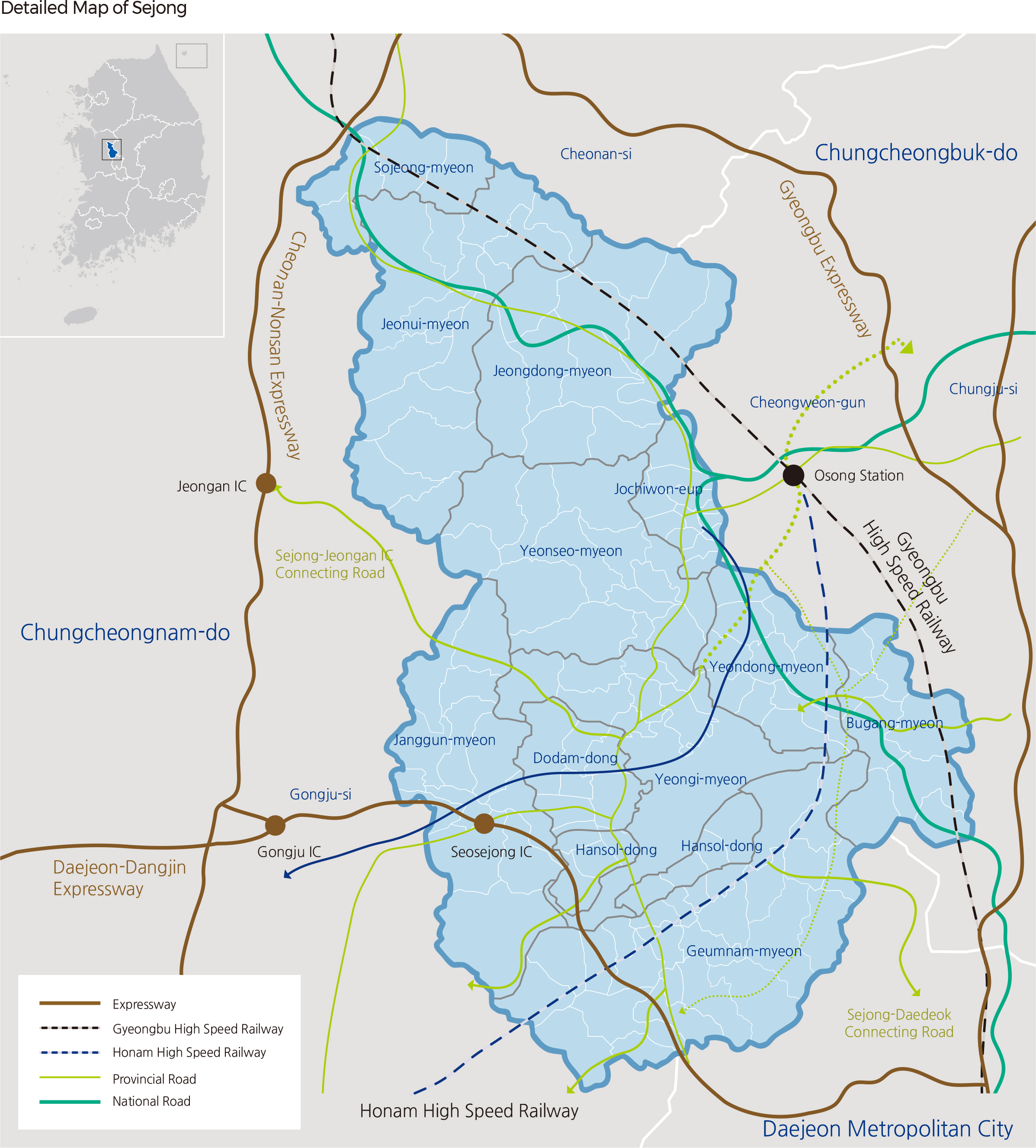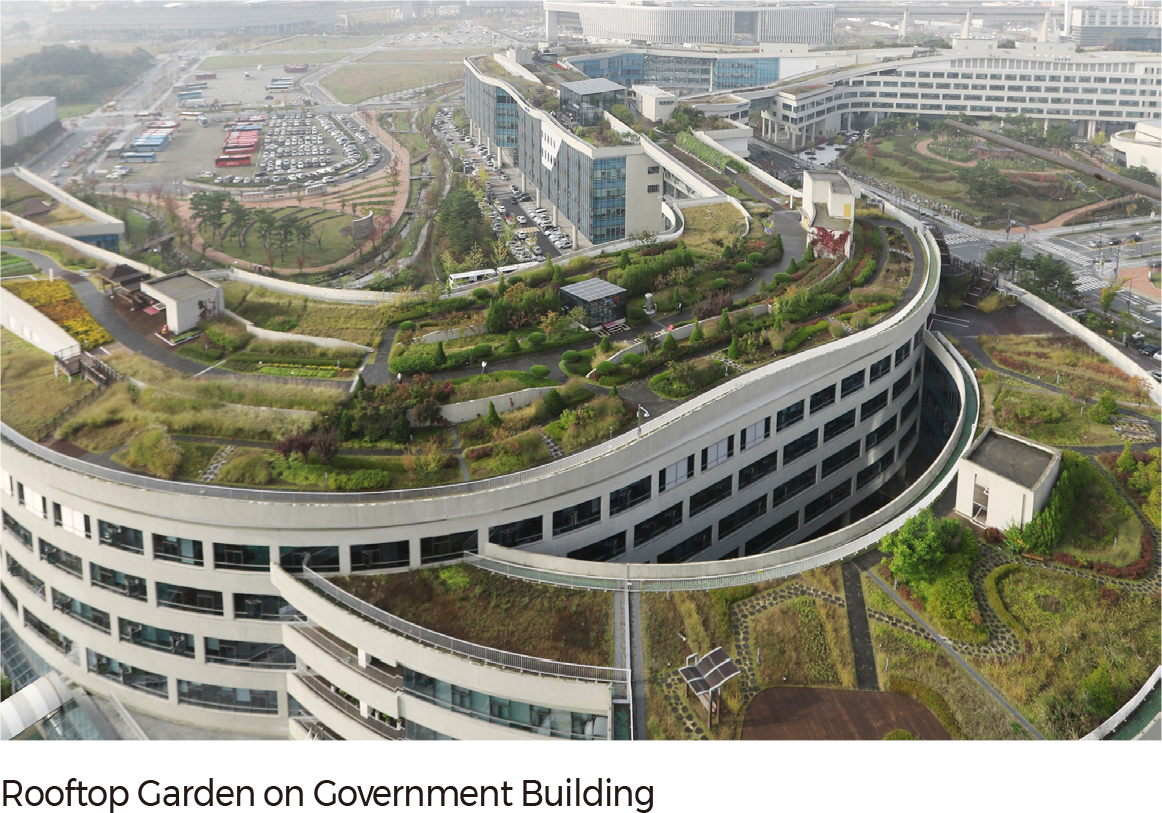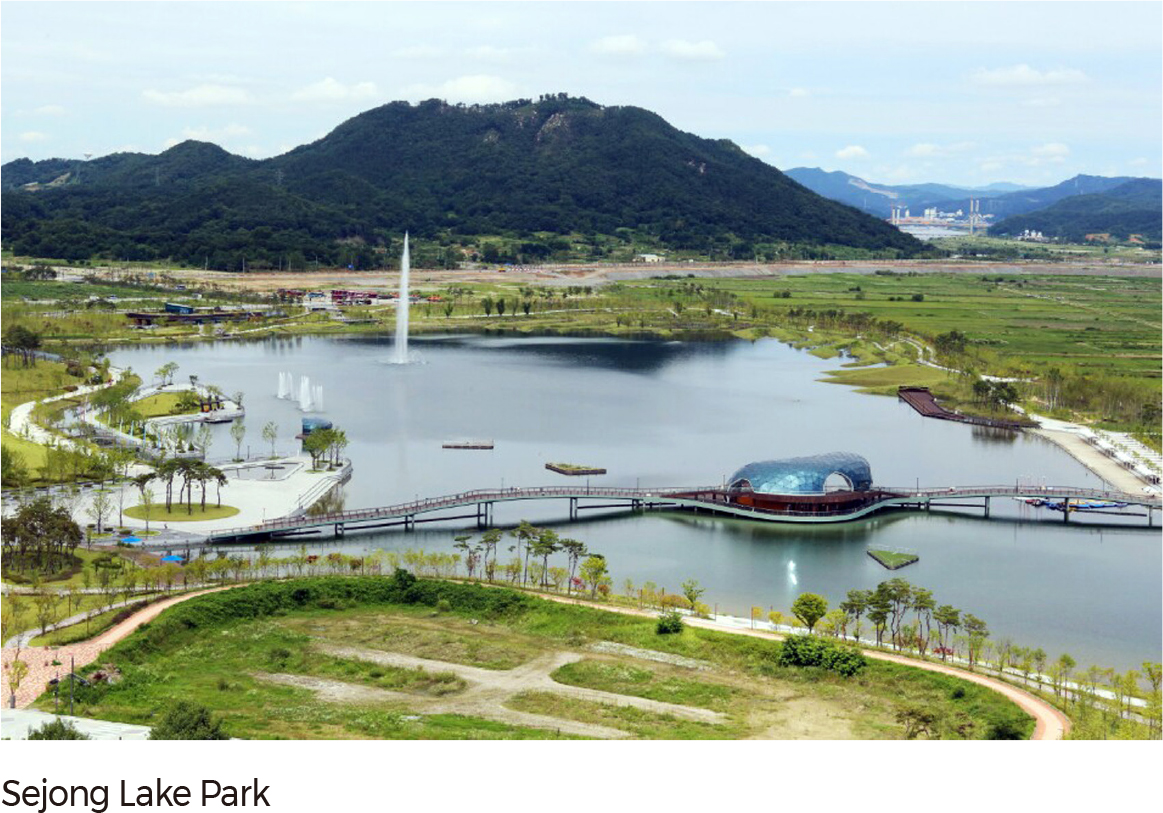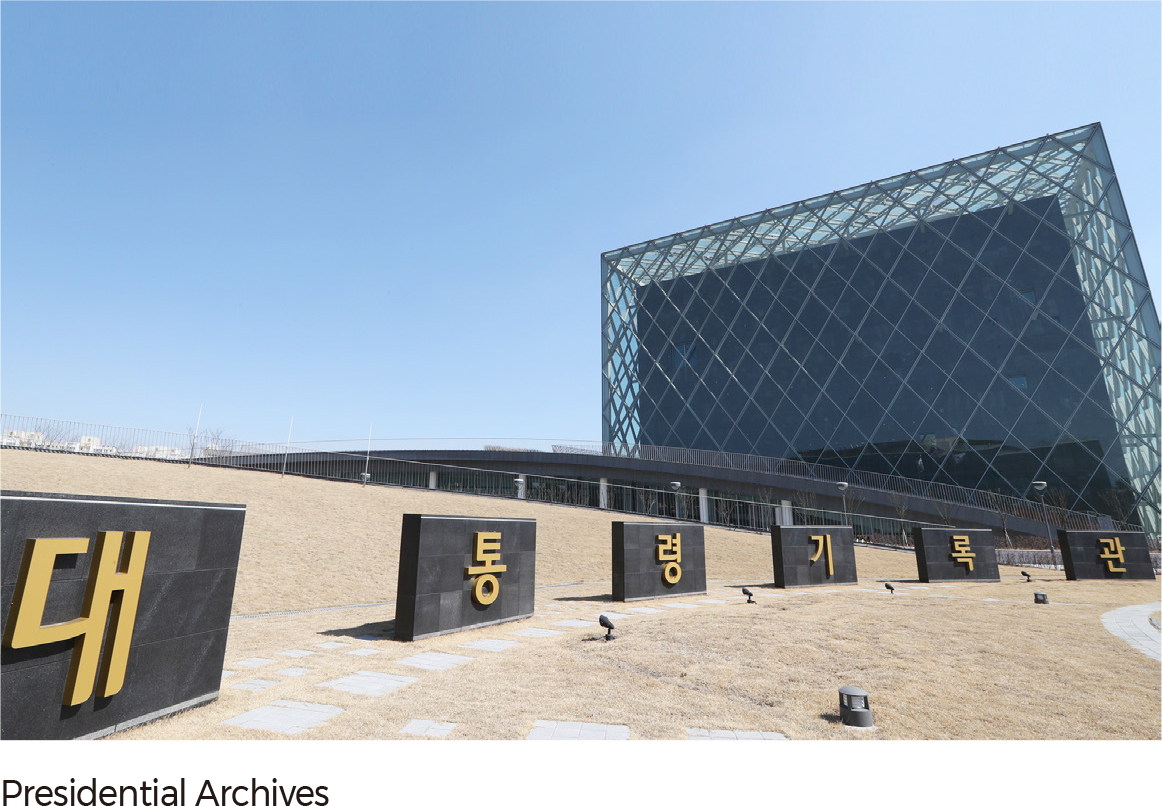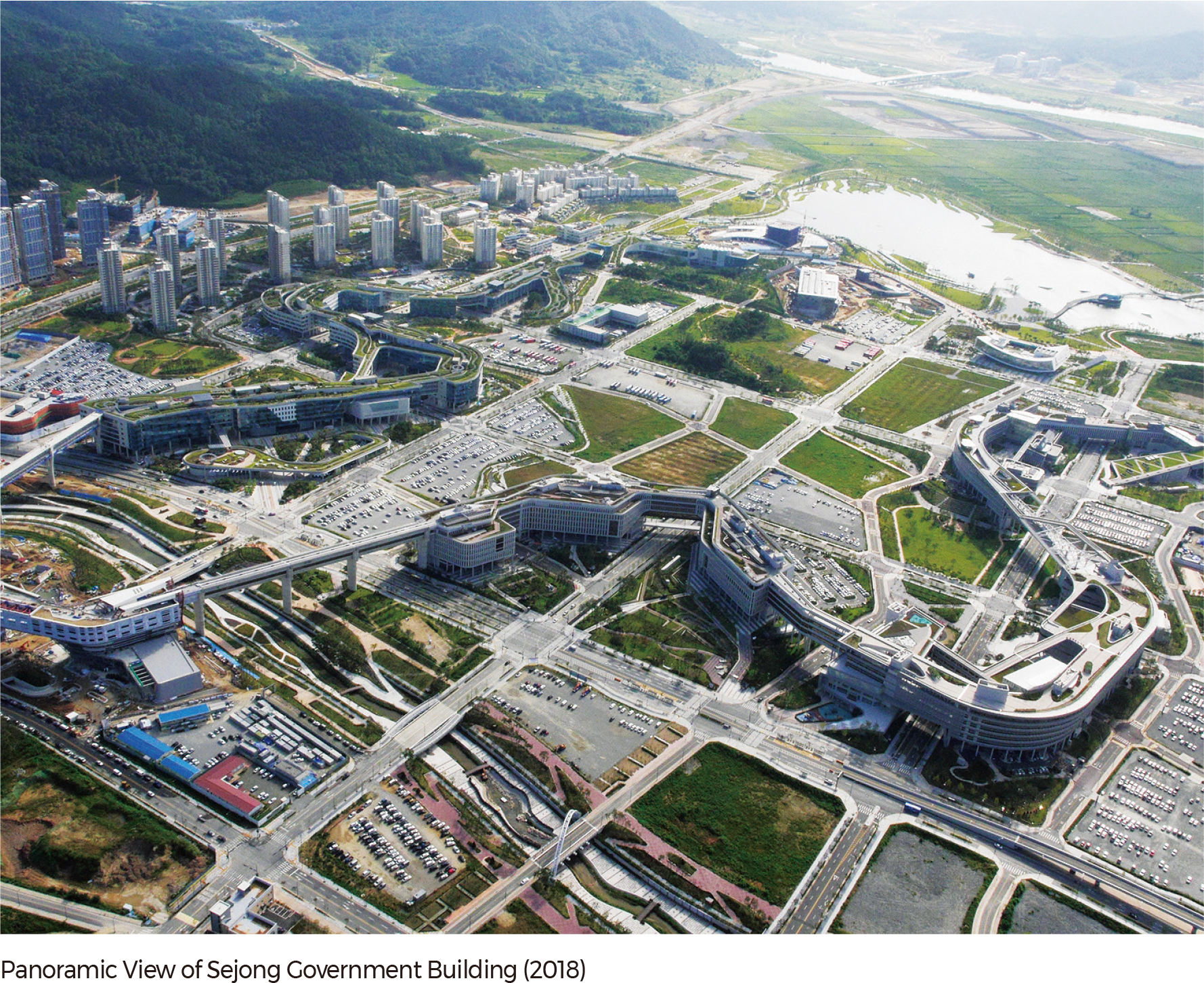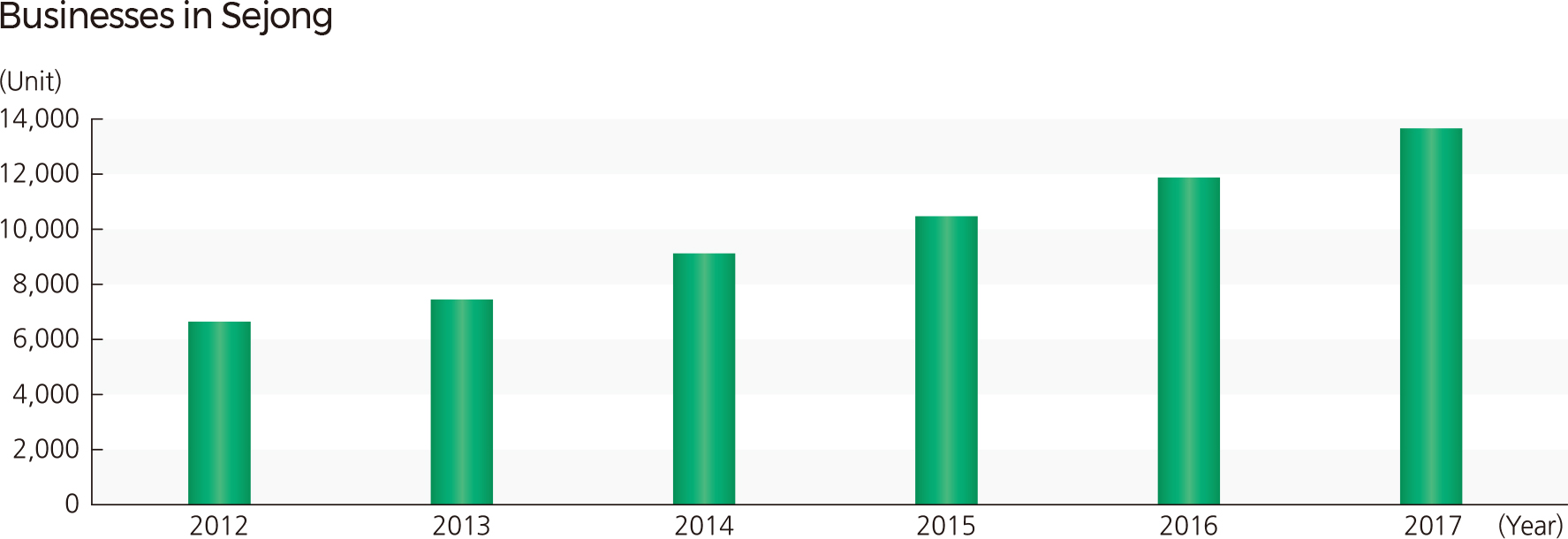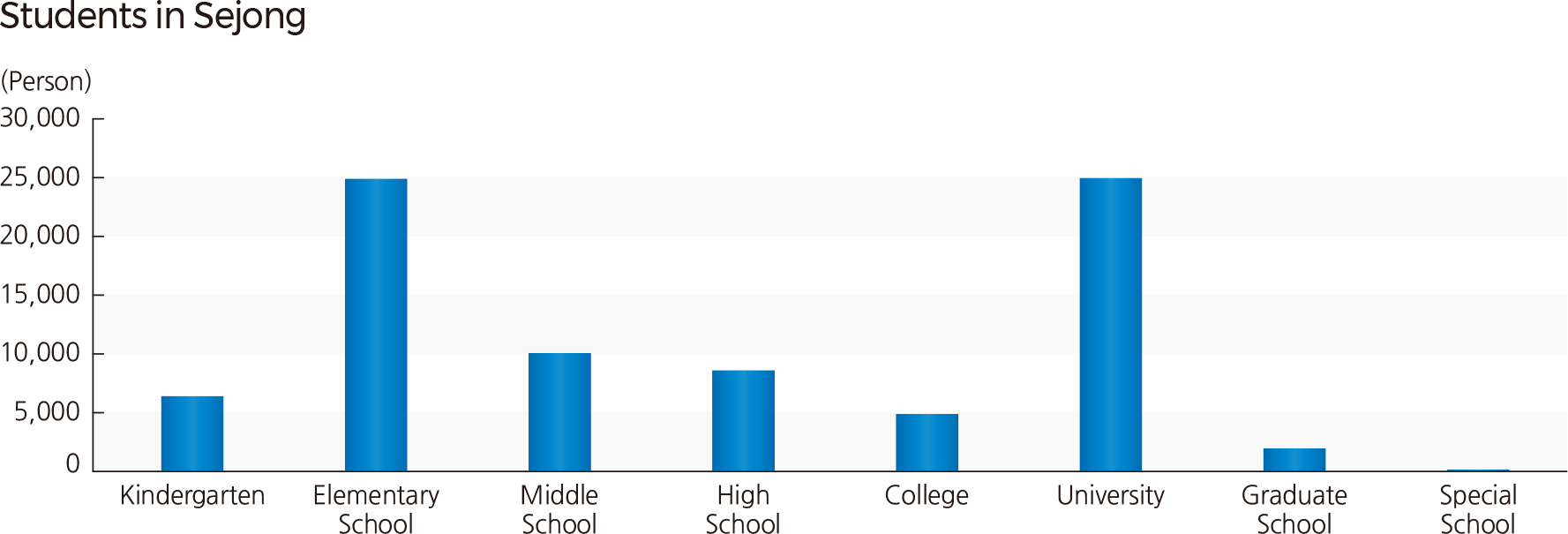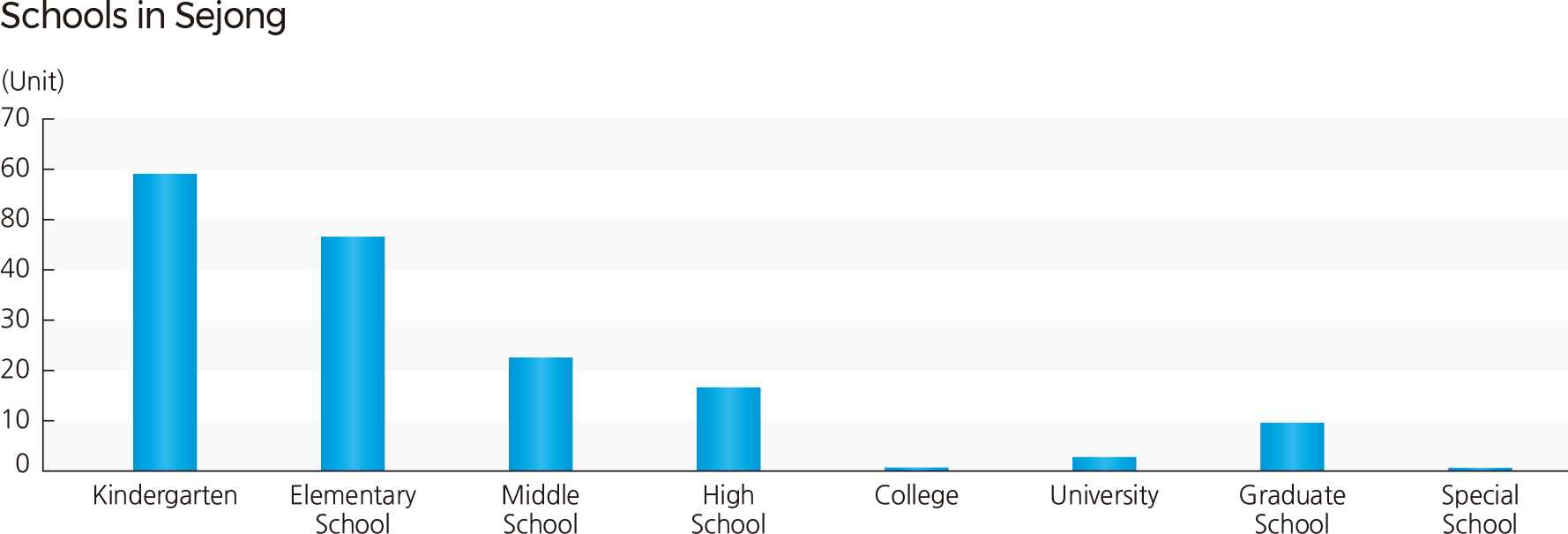English I 2019
Since the 1960s, Korea has experienced rapid economic growth. One of the factors behind the success has been a state-led development plan that controlled the speed and direction of industrialization and urbanization. The two major pillars were the National Development Plan and a five-year Economic Development Plan, which focused human and material resources on Seoul, the Seoul Metropolitan Area (SMA), and the Southeastern Coastal Region. Uneven development between these regions, in particular the metropolitan areas, has become one of the most urgent challenges that Korea needs to address.
Many strategies to address over-population in the capital area and to promote balanced land development have been implemented. An effort to address these issues through the relocation of the national capital dates back to the late 1970s. Former President Park Chung-Hee made a plan to relocate the capital to Gongju-si as Seoul’s proximity to North Korea could cause a security concern along with overcrowding. In 2002, then-presidential candidate Roh Moo-hyun pledged to relocate the capital for balanced national development. After his inauguration, President Roh supported a special law for the construction of a new administrative capital, and the National Assembly passed the legislation relocating and building a new administrative capital in the Yeongi-Gongju area in Chungcheongnam-do.
Some argued that the administration could not solely make a decision on capital relocation and suggested that a constitutional revision be required via a national referendum. Under these circumstances, the administration changed the plan from building a “new administrative capital” to building a “multifunctional administrative city” by relocating a portion of the administrative functions. In 2006, the new city was named “Sejong.” Sejong-si is responsible for partial national administrative functions, so it became a metropolitan autonomous city, which is not under the jurisdiction of a province. Sejong Metropolitan Autonomous City was formally created on July 1, 2012. Sejong is located in the central part of the Chungcheong Region and borders Cheongju-si, Chungcheongbuk-do to the east, Gongju-si, Chungcheongnam-do to the west, Daejeon metropolitan city to the south, and Cheonan-si, Chungcheongnam-do to the north. Currently, the city is comprised of one eup, nine myeons, and 14 dongs.
The relocation of administrative branches resulted in many massive projects, such as new city development and the construction of government buildings, as well as developing the city’s infrastructure. At the beginning, administrative branches announced their respective relocation plans except for the Ministry of Foreign Affairs, the Ministry of Justice, the Ministry of Unification, the Ministry of National Defense, and the Ministry of Gender Equality and Family. As of 2019, 18 central government branches and 20 government-led organizations have moved into the city. Thanks to the relocation of some administrative branches of government, the population flowing into Sejong has increased continuously, and as of July 2019, it reached 335,826: 330,298 Koreans and 5,528 foreigners. The population is expected to reach 800,000 by 2030. |

